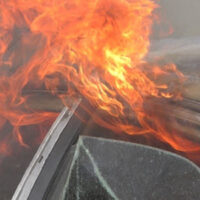How Burn Injuries Happen and Why They’re So Severe

Burn injuries can be some of the most horrific, painful, disfiguring and disabling injuries someone in an accident can sustain. And yet, they’re hardly the first kind of injury people think about when they think of accidents that cause personal injuries.
You Don’t Always Need a Heat Source
We tend to think of burns as injuries that occur when our skin comes into contact with something hot, and obviously, that’s true. But that’s not the only way that burn injuries happen.
Burn injuries can happen when our skin is exposed to chemicals, such as those that may be in airbags. Burns also happen as a result of friction—imagine that you fall, and part of your body slides on the ground, causing a burn injury.
Electrocution is another common injury where burns can result.
And of course, exposure to fires—including fires that may happen in car accidents—are another leading cause of burn injuries.
Scarring and Infections are Serious Risks
Yes, burning can cause scarring, which itself is a severe and disfiguring injury. But burns don’t just burn skin—they also burn through nerves. So, with a burn injury that is severe enough, a victim can suffer a complete loss of sensation or feeling in the area, as the nerves in the area have been permanently damaged.
Burn injuries open the top layer of skin, exposing what is underneath to the outside world. The burn area is often warm and moist. All of that introduces the likelihood of the spread of bacteria, and with bacteria, comes the risk of infection and sepsis, the body’s reaction to bacteria.
Degrees of Burns
The severity of burns depends on the degree. First degree burns are minor, and usually cause no long term damage. In fact, many of us have suffered first degree burns, touching a hot plate, or perhaps, being in the sun too long.
Second degree burns may require skin grafts. Here, the first layer of skin has burned off. Blistering may also be visible. Scarring is likely, when the second degree burn heals.
Third degree burns go even further, but because they may actually burn nerves, third degree burns may hurt less than second degree burns. Long term however, the nerve damage can cause permanent loss of feeling.
The most severe type of burn is a fourth degree burn. Here, tendons and tissue underneath the skin is exposed. There is significant pain, and of course, because of the exposure, a very high likelihood of infection. Multiple skin grafts may be necessary.
Quick Exposure
Even though third and fourth degree burns are severe, they ironically don’t require much contact with a heat (or any) source to happen. With a hot enough source, only a second of exposure, may be enough to burn through skin. And when chemical burns are involved a chemical can get through the top layers of skin, in only a second or two.
Were you burned in an accident that was caused by someone else’s carelessness? Call our Tampa personal injury lawyers to schedule a consultation today.
Sources:
hopkinsmedicine.org/health/conditions-and-diseases/burns
stanfordhealthcare.org/medical-conditions/skin-hair-and-nails/burns/types.html
